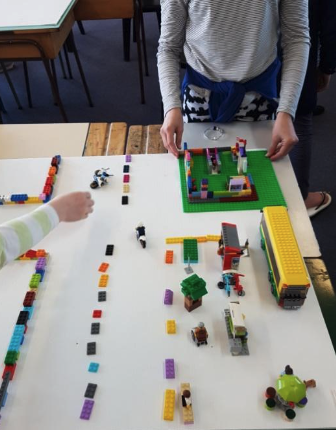Award
School projects
Winner
Tasman District Council and WSP
In brief
Brightwater in Tasman is a peri-urban town of some 1,500 residents and is surrounded by rural landscape and horticulture. The challenge with this project was to successfully consult, connect and engage with this community. We needed a way in to the heart of this community, to understand it and activate robust discussion.
The detail
(From the nomination form.)
Brightwater Main Street Upgrade
Introduction
WSP in partnership with our client Tasman District Council undertook community consultation on the upgrade of the township of Brightwater main street. Brightwater is a peri-urban town of some 1,500 residents and is surrounded by rural landscape and horticulture. The challenge with this project was to successfully consult, connect and engage with this community. We needed a way in to the heart of this community, to understand it and activate robust discussion. The idea was formed that the local Brightwater Primary School was a real central point of the community. It was decided to run a student year 6 ideas workshop on their main street. Our aim was to get ideas of the young people of the community and through the young students to motivate and interest the school staff and parents. A bonus was to educate these young students on the concept of town planning and hopefully inspire the next generation of planners and engineers.
 Consultation workshop in a Primary School
Consultation workshop in a Primary School
Sometimes a project comes along that has latitude for fun and being a child again. So, our project team embraced this concept and went shopping for $2,000 worth of streetscape Lego blocks. Armed with huge plastic containers of bright coloured blocks, buses, cars, bicycles and Lego people we invited the year 6 students to remake their main street. First, we had a group discussion about some design parameters, some key limitations and as a group talked about providing safety for all users. The students set to the task for an entire day. The outcome was amazing. At morning tea and lunch break most of the students hardly stopped. The windows of the class room were covered by the faces of the other students, peering in, wishing their class had such a cool project.
At the end of the day each group of students gave a presentation on their ideas, which we videoed. These ideas and videos were then used for key stakeholder consultation session, public open day drop in session and were shown to the local community board.
The ideas from this process were detailed and very useful. From the big puddle at the bus drop off, which gets everyone wet getting off the bus on a rainy day, the bumpy footpath that is too hard to scooter along, through to the difficult side road to cross that stops me being allowed to walk to school.
The children taking this discussion home and talking with their families did help us connect with this community and got their family and friends motivated about the main street project.
Going the extra mile to teach young planners & designers
There is always a challenge on project budget to provide value for money to the client and the community. Spending an entire day with year 6 class might seem a bit excessive. But WSP felt giving something back to the community was important and sharing our profession with these young bright minds might bear fruit in the future. So, part of our planners and engineers time was volunteered. We hoped that through this process some of these young students might consider a future career in planning or design.
Why this Project is worth recognition by a Walking Best Practise Award
This project demonstrates a very worthwhile process to connect with a small-town community. The outcomes of this consultation were very successful. We had an excellent turn out at the public open days with many parents inspired to come along to see their children’s ideas. The community board and local business group were very impressed that the ideas of young students had been considered and school safety.
The concept for the main street was strongly supported by the community and fully endorsed by the elected council. The project is currently under construction, with a capital budget of $1.3 M, with an expected completion target of June 2020.
We feel the idea of engaging with the local school students, through construction Lego medium, is an idea that could be used throughout New Zealand and the concept of creating community engagement through local schools is also very transferable for other smaller centres in New Zealand. It is a valuable process for the planning profession, demonstrating what planners do, creating great discussion and hopefully inspiring another generation of planners.
Getting the views of the future generation to create a walkable community for them is essential.
